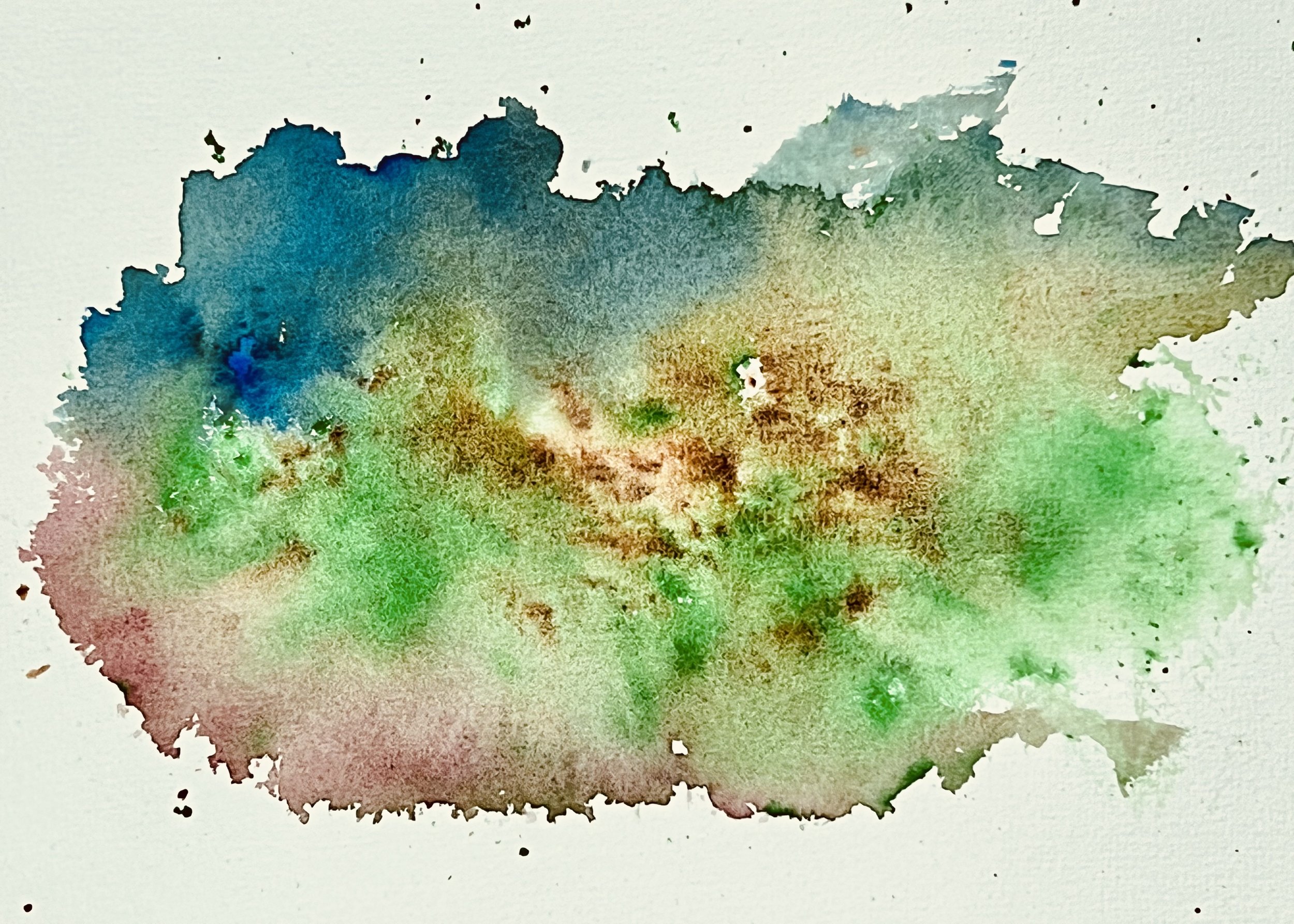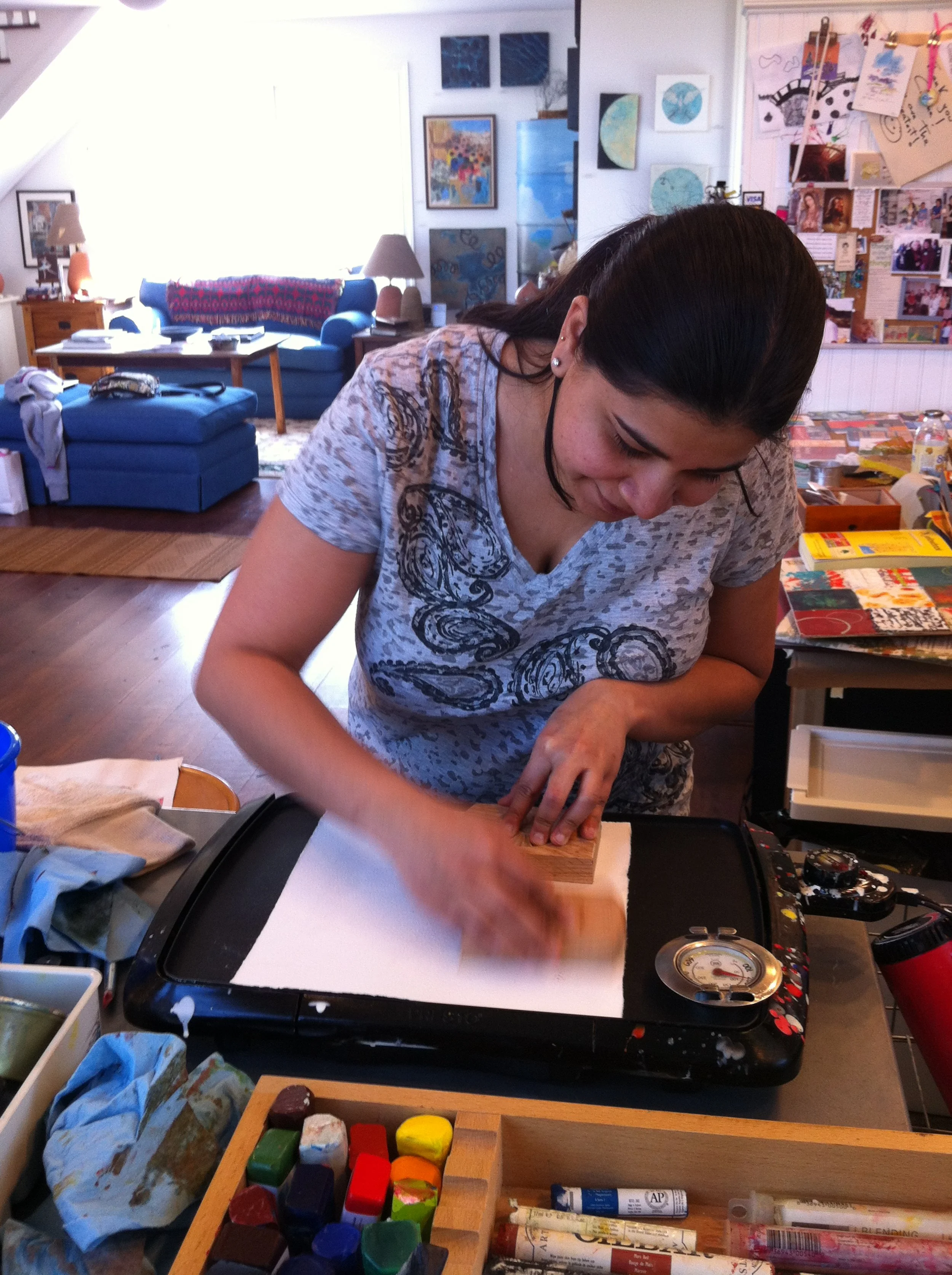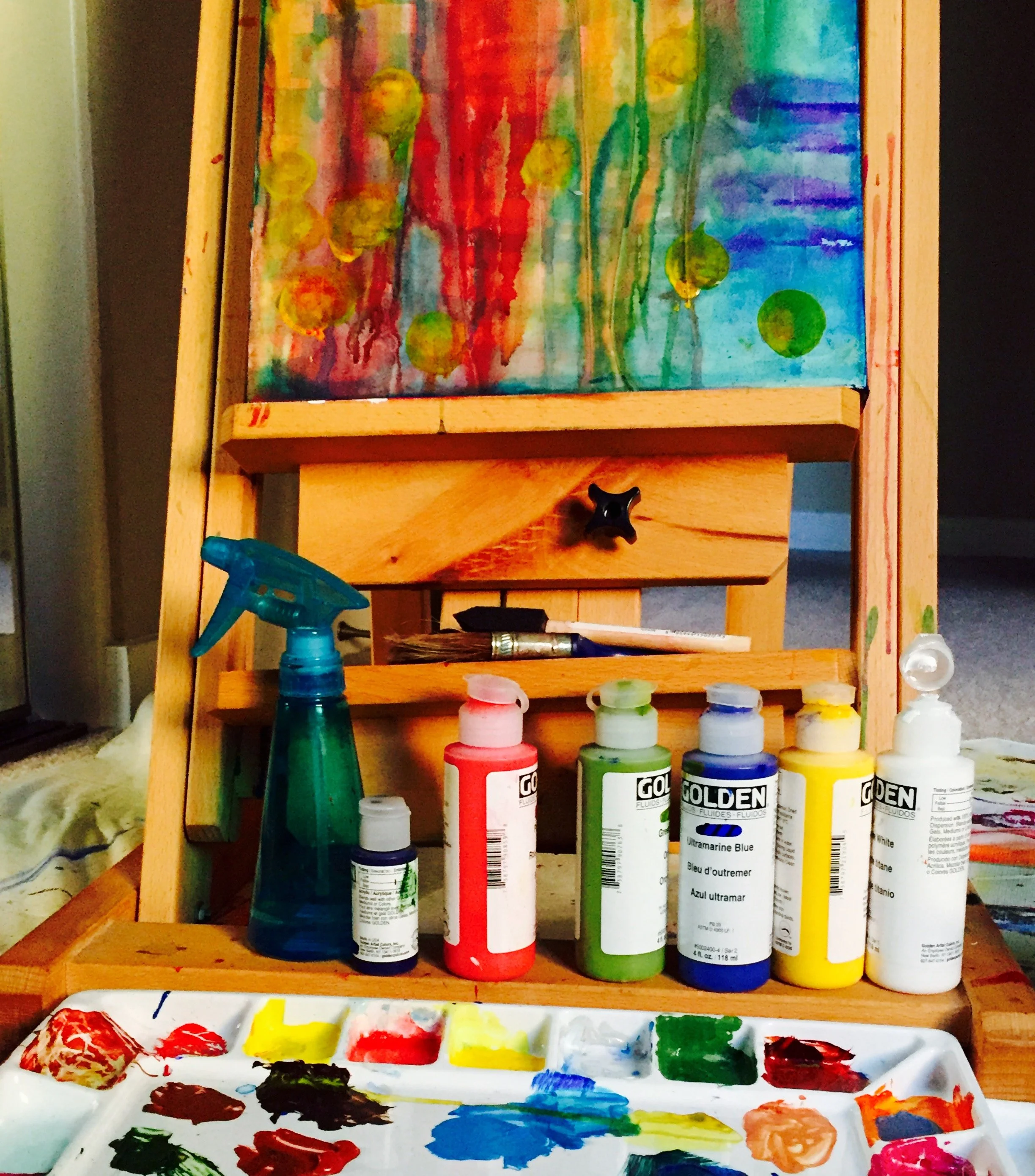The training of the mind is art,
Nature in it's pristine form is art,
One's life and the routine of everyday life is also art.
All we need to do is just stand still and be an observer,
see things and not let them just past by,
Appreciate being where we are because thats exactly where we need to be.

I am substantially self-taught as an artist who had an upbringing deeply rooted in arts and culture.
My formal training is limited to a few months of wonderful classes back in high school with a local artist Narendra Rai Shrivastava, a much beloved teacher, and a lovely human being. I was a science major, getting ready for a career in engineering and architecture. But, I loved art classes and tried to take as many as I could, immersing myself in them fully.
His teaching had a huge impact on me. Not only did his lessons ground my work from a technical perspective, but he also provided deeper lessons about art and life: mark-making, intention, mindfulness,. that I recall frequently, even years later.
Through my life I have had a lot of people who believed in me before it even occurred to me to believe in myself, see myself as an artist.
Many years later, I had a sudden epiphany and realized that I had to be an artist, after all, and I was terrified, having no idea how to be one. In those days I took a lot of strength from these moments of encouragement, from knowing that somewhere out there, there are those that I admired and trusted, believed in me. I could do it!
Exploring the Beauty and Complexity of the Everyday
My art is not about one subject or another, it comes from the pleasure of seeing; of being cognizant of the world around me. I focus on those passages that reside within the in-between spaces of our lives that we see but often do not stop still long enough to notice and admire. I stop and stay with the experience of the inquiry, instead of chasing answers.
My art is about appreciating where I am, because thats exactly where I am suppose to be.
I really enjoy solving the problems that arise in the course of the work. Often there’s a phase in my work where I hit an impasse, where I feel stuck and can’t see the way out. I really delight in devising novel or ingenious ways through those seemingly impossible straits, especially when it comes in an “a-ha” flash of insight.
I also love seeing people respond to my work in person, whether I’m exhibiting my work publicly or delivering a piece to a client. I used to imagine that my fantasy was to be alone in my studio and just make stuff all the time, I’m coming to realize that that’s not really true.
As much as I love the alone-in-the-studio portion of the work, the work is only truly complete once another person receives what I have to give.
Mostly though, I love when I lose myself in the work. I love when I’m fully engaged with the process and immersed in the making. That’s when I feel most at home in the universe.
From the beginning, I was drawn to the stark visual interplay of positive and negative space and loved the play of contrasts. The awareness I bring to a painting is immanent and rooted in feeling. My abstract and landscape paintings are looser, more spontaneous, colorful, and emotionally-expressive, often featuring gestural marks made with brushwork, paint pens, or art crayons. It is like writing—with its agonies and ecstasies and clever turns of phrase.
My Full time job as a business leader is about precision and planning that requires an analytical, exacting mindset and a certain mode of insight that I really enjoy bringing to bear on my work.
These distinct approaches function as multiple lenses through which I explore and experience creative unfolding as it reverberates through emotion, perception, and understanding.
My creative process is driven by impulse and inquiry. Building on previously unexplored or unresolved aspects of prior work, I begin with open-ended play within loosely-defined parameters (e.g. medium, size, palette.). As I experiment, I notice aesthetically-satisfying forms or structures and then elaborate upon them, repeating them and joining them together.
As I work, I take note of marks and moments that elegantly turn a phrase while training my eye on the point at which order emerges spontaneously from the chaos. At the same time, I work to distill complication into clarity, removing what is nonessential, editing and refining until the resulting image is coherent and compelling.
Prize is in the Process
I first use color and contrast to describe the painted space, and then build up to a rhythm of repeated gestural marks, noticing moments of grace and beauty as I go, responding to change and challenge spontaneously as they emerge on the canvas. My process is sensory and tactile, resonant with feeling, appreciative of color in its solid-liquid suspended pigment form. This physical awareness grounds me in the present moment and guides my movements and decisions with intention and integrity.
My Indian roots and life steeped in its culture and heritage defines the rhythm of my work--unseen but deeply felt--influencing my choices of color and content, informing the deeply-held values and aesthetic, spiritual consciousness that pervades my work.
As a multidisciplinary artist, it can be very obvious that I’m in a different period of expression based on what medium I’m working in. The medium is the message.
My work has changed over time, and I have certainly worked through several distinct expressive periods.The more work I do, the more I see how the successive, distinct phases in my work are all actually part of a single movement. They are part of one spiraling gesture that cycles up and up through phases of development. So it’s a different period of expression, but the periods aren’t linear, and the work is a continuation of past work more than a departure.
Moving forward, I expect to continue to see this evolution and am excited to be able to continue to draw on previous chapters in my work to create work that is entirely new.


